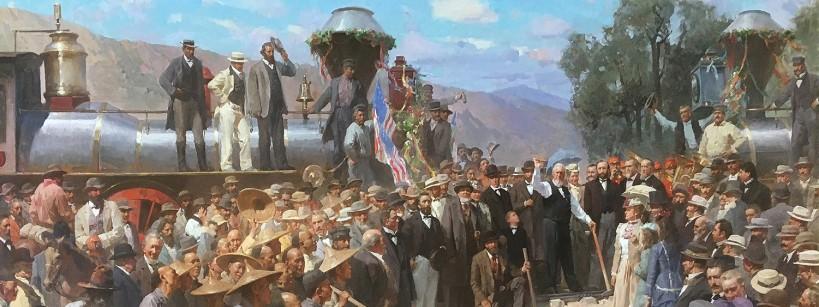Self-Paced Lesson
Students will search for a hidden history by analyzing two pieces of artwork. One artwork includes the history of the Chinese community. The other artwork hides the history of the Chinese community. During this activity, students will answer the question: Which artwork best tells the story of the Chinese community in the 1800s? They will answer this question by looking closely at both pieces of artwork and reading their object labels. Students will then create a piece of artwork that tells a story about one of their own communities.
Standards
CA HSS 4.4.1
CA HSS 4.4.3
CA HSS 8.8
CA VA: Re7
CA VA: Cn11
CA VA: Cr1
CA VA: Cr2
Lesson Resources
Lesson: Pdf in full; Pdf in Spanish
Student Response Sheet: Student Response Sheet (fillable pdf); Student Response Sheet (fillable pdf) in Spanish
Teaching Tips for Different Learning Environments
Whole Class In-Person Learning:
Relate: Students will make connections to their own lives.
- Discuss the meaning of community and the different types of communities with the whole class. Then ask the students to share some of the communities that they are a part of.
Investigate: Students will analyze artwork and object labels.
- Read the INTRODUCTION, PART 1, PART 4, PART 6, PART 9, and PART 11 with the whole class. After reading each part, have the students work in groups, with partners, or individually to complete the corresponding activities such as look, find, circle, and write. Then have the students share their answers from the different activities with the whole class.
Create: Students will create their own artwork and object labels.
- Assign the students PART 13, PART 14, and PART 15 to complete individually.
Demonstrate: Students will demonstrate their learning by sharing their work with others.
- Have students share PART 14 and PART 15 during a classroom exhibition or gallery walk.
Whole Class Distance Learning: Follow Whole Class In-Person Learning above. Instead of having a classroom exhibition or gallery walk, students can post a video of themselves sharing PART 14 and PART 15 through Padlet or Flipgrid for others to view.
Associated Resources
*The artwork above is a loan courtesy of the Hronopoulos Family, La Jolla, CA.




